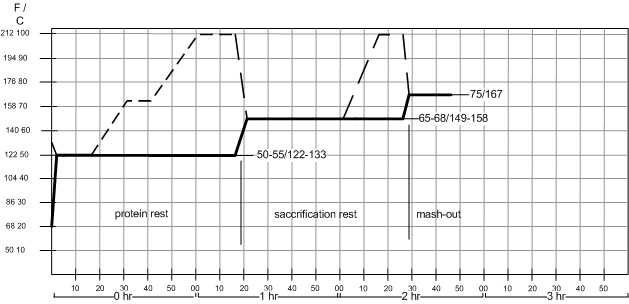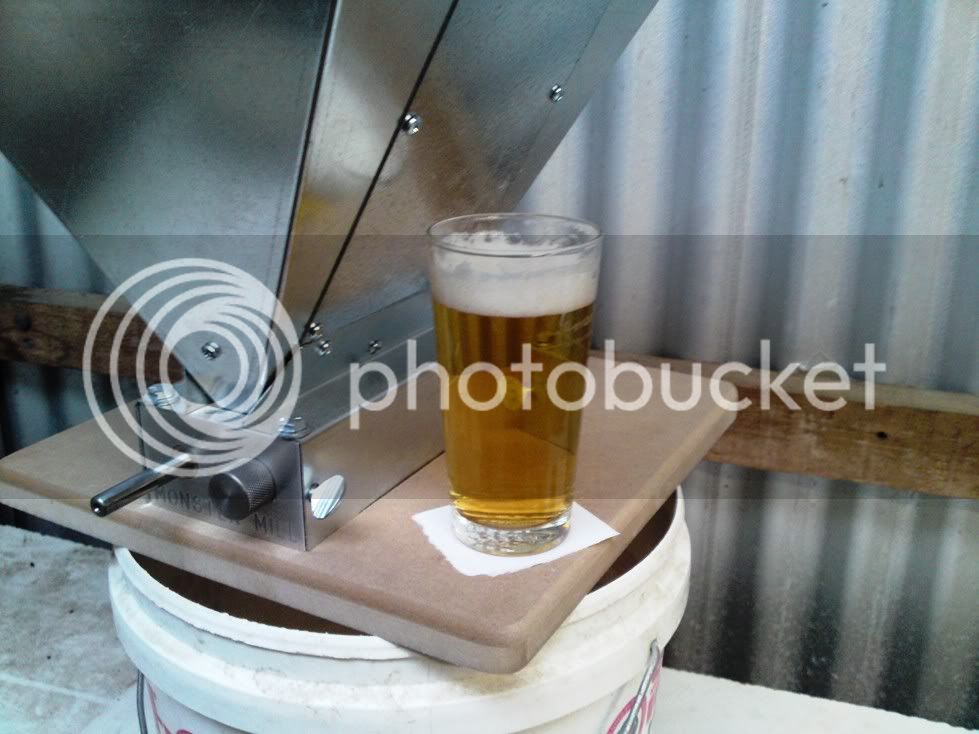drtomc
Fermentationist
Decoctions for morning brewing.
Melanoidin for evening brewing.
Life is all about compromises.

T.
Melanoidin for evening brewing.
Life is all about compromises.
T.

Not really suitable for a czech pils. Not very tasty.
Hmm, BB Malt no good?
This is basically the only malt that I use as I bought a heap in bulk? Didn't actually realise there was significant difference between base malts
Other than that I have some Marris Otter?
Otherwise I will need to order in some Wey Pils
Didn't actually realise there was significant difference between base malts
BB malt will be fine, it will just not be beer-****** authentic, I used Joe White Pils malt in my last BoPills, it's not the same, and it's not authentic, but it still tastes fine.Hmm, BB Malt no good?
This is basically the only malt that I use as I bought a heap in bulk? Didn't actually realise there was significant difference between base malts
Other than that I have some Marris Otter?
Otherwise I will need to order in some Wey Pils
BB malt will be fine, it will just not be beer-****** authentic, I used Joe White Pils malt in my last BoPills, it's not the same, and it's not authentic, but it still tastes fine.
If you have BB, I'd use it, but in the future or if you wanted to go all out authentic, then a specialty (under modified) German Pils malt (like Weyermann's Floor Malted Bohemian spring barley) and decoction mash are really the way to go.
It's not often i agree with Nick but a decoction, to my taste, is the difference between a good bo pils and a great bo pils.
There are those who decry decoctions as pointless as malts are modified enough to not warrant them but the extra dimension you get to the malt flavour from a decoction means i wont brew a pilsner without one. :icon_drool2:
Is Boh Pils Malt grown in Czech Republic? Or is it just that the Hanka variety (Boh Pils) of Pils Malt is grown in Germany?
On the subject of ******-free brewing ... I recently did a Czech Pilsner with Amarillo. At first, it was WEIRD. By the end of the keg I was lovin' it. Might do a Citra Boh Pils next.
Bohemian "style" Pilsner malt is undermodified - ie germinated less during the malting process retaining more starch / protein / glucan. The decoction process was favoured traditionally as these malts were inherently undermodified due to poor malting and decocting helped break the gluten/protein/starch apart so it could be converted in the mash.
Only decoct if you are using undermodified malt otherwise you'll "overmodify" your mash resulting in a thin beer. Czech Pilseners need a bit of body and maltiness, so if you plan to do a single infusion at 65C a tiny amount of carapils or melanoidin might help.
Czech's use the spelling "Pilsener"
Germans are fond of "Pils" to distinguish themselves from the Czechs but also use "Pilsner" and "Pilsener" interchangeably.
Moral of the story you can call a German what you like but a Czech should always be "Pilsener"

Bohemian "style" Pilsner malt is undermodified - ie germinated less during the malting process retaining more starch / protein / glucan. The decoction process was favoured traditionally as these malts were inherently undermodified due to poor malting and decocting helped break the gluten/protein/starch apart so it could be converted in the mash.
Only decoct if you are using undermodified malt otherwise you'll "overmodify" your mash resulting in a thin beer. Czech Pilseners need a bit of body and maltiness, so if you plan to do a single infusion at 65C a tiny amount of carapils or melanoidin might help.
Czech's use the spelling "Pilsener"
Germans are fond of "Pils" to distinguish themselves from the Czechs but also use "Pilsner" and "Pilsener" interchangeably.
Moral of the story you can call a German what you like but a Czech should always be "Pilsener"

This is my last Bo Pils, made with 100% Wey Pils malt.
Why don't you use the Hanka grain, Doc?
Great looking beer Doc,
OK, So I'm going to grab a bag of Wey Pils as I have other beers to make with this grain, I use BM2 and using the Decoctions Double Mash profile it says to take 7.5lt mash and bring to the boil... my question is, does this mean 50% mash and 50% wort?
from what i read from other posts here, i need to boil the actual grain? correct?
thanks guys!
Not so much 50/50 but just grab 7.5L of the mash and boil it, so some grain and some liquor, I'd recommend ensuring there's more grain in it than liquor (Edit: As per DrS, more like 90% grain, adjust liquor to prevent sticking). You can delve into thin and thick decoctions if you want, I happen to prefer thick, there's even a setting for that in some software, eg. StrangeBrew2.Great looking beer Doc,
OK, So I'm going to grab a bag of Wey Pils as I have other beers to make with this grain, I use BM2 and using the Decoctions Double Mash profile it says to take 7.5lt mash and bring to the boil... my question is, does this mean 50% mash and 50% wort?
from what i read from other posts here, i need to boil the actual grain? correct?
thanks guys!
Enter your email address to join: